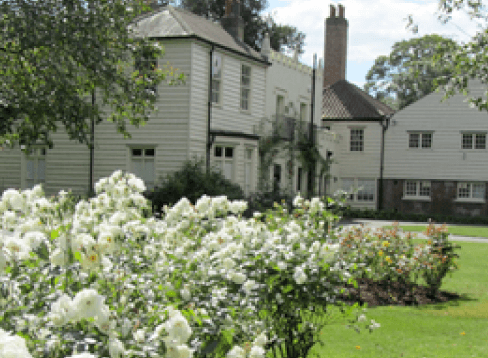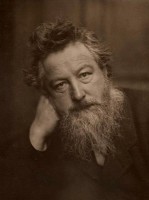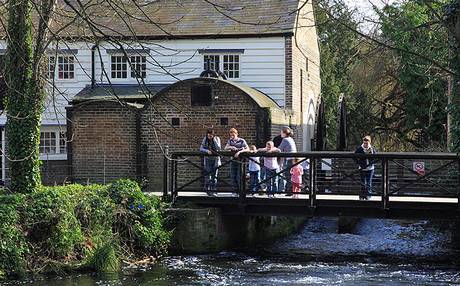
The Wandle Valley Regional Park has a rich industrial and cultural heritage, glimpses of which still remain to remind us all of fascinating past times.
There is no other river valley in London with such a vivid history. In the time of the industrial revolution, the fast-flowing river waters powered almost 100 water wheels and their associated mills, from Croydon and Carshalton to the Thames at Wandsworth. Two of these water wheels are still working today.
From the Ram Brewery in Wandsworth where beer has been brewed since Tudor times, to Merton Priory, seat of England’s first parliament, the Wandle Valley is a treasure trove of largely undiscovered historical gems, a few of which are described on this page.

William Morris and the Wandle
Merton Abbey Mills, now an arts and craft market, has a long history of textile manufacturing and was acquired by artist and designer, William Morris, in 1881. He established dye-works, stained-glass manufacture, textile printing and tapestry and carpet weaving. The gardens were used to grow plants for dye and he rinsed his fabrics in the waters of the Wandle – pretty colours but lethal pollution.

The snuff that dreams are made of
Two snuff mills, which used to grind tobacco leaves into snuff, can be found at Morden Hall Park, a National Trust property. In the 18th century, sniffing snuff was all the rage, especially amongst well-to-do gentlemen. Production only ceased in 1922, but the altruistic owner, Gilliat Edward, continued to employ the workers on his estate.
Royal connections
Carew Manor, in Beddington Park, was home to the Carew Family from as early as the 14th century, but rose to prominence in Tudor times. It is said that Queen Elizabeth strolled in the gardens with Sir Walter Raleigh. Henry VIII visited Anne Boleyn and Jane Seymour here – though on different occasions. Today, it’s a school, but the Great Hall is open to the public on certain days and you can also see an amazing 18th century dovecote which contains 1300 nest boxes.

